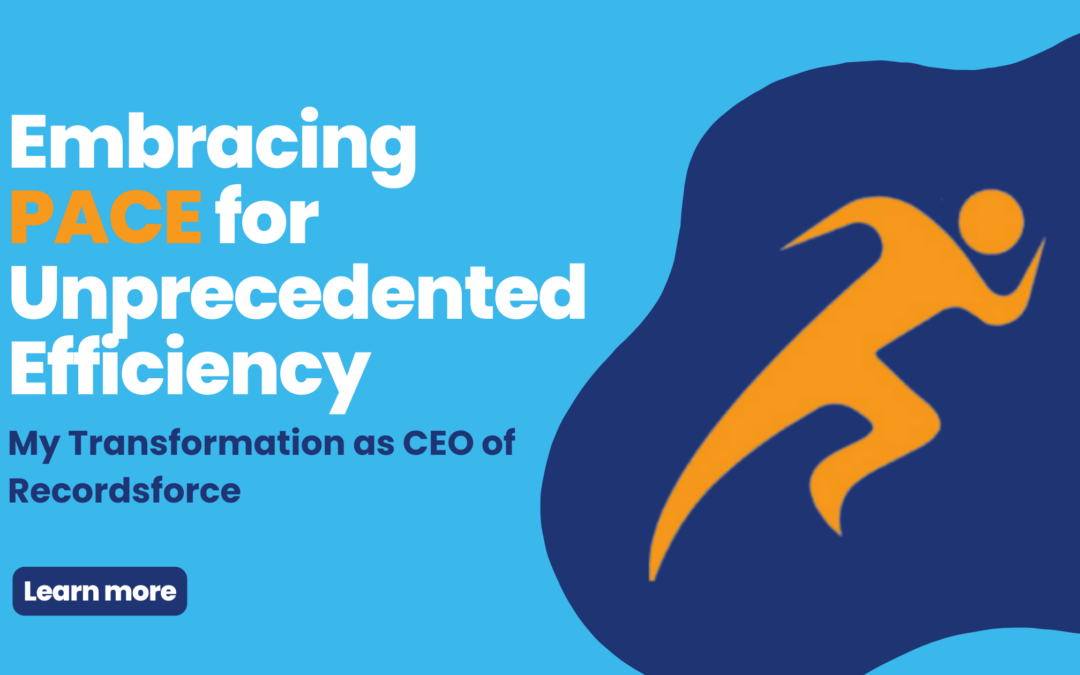Gone are the days of whiteboards cluttered with customer names and symbols representing job statuses, clipboards keeping track of start and stop times for prep jobs, and the endless back-and-forth between scan operators and data entry personnel using shared Google sheets. The era of manual punch clocks and binders filled with customer instructions is behind me. This was my reality before the game-changing implementation of PACE.
Since incorporating PACE into our operations, my role as CEO of Recordsforce, a document scanning company, has undergone a remarkable evolution. I now have the freedom to manage our business from virtually any location with internet connectivity. Allow me to shed light on the pivotal changes in my daily life as a direct result of PACE integration:
Real-Time Insights: In the past, project profitability remained a mystery until the end of the month’s billing cycle. We lacked visibility into our costs and revenues until spreadsheet calculations were done for billing. With PACE, I can generate a profit report just one day after initiating a project, gaining immediate insight into its potential profitability. This real-time data enables us to have candid conversations sooner, simplifying the decision-making process. Reports like the Expected Volume Per Container report ensure alignment between proposals and actual work, preventing budget discrepancies from arising a month later.
Batch View Advantages: The Batch View feature provides a real-time overview of all ongoing work in our production environment. I can easily monitor the progress of each batch, tracking the number of containers at various stages and the time taken for each task. Batch View modernizes the conventional whiteboard, incorporating the efficiency of digital information. I have the flexibility to filter and sort batches, focusing on specific customers and arranging them in preferred sequences.
Streamlined Work Queue: During periods of increased demand, efficient task allocation is paramount to ensure smooth workflow progression. Scarcity of scanning materials can’t be afforded, necessitating a steady supply of prepared materials for scan operators. Previously, I had to physically traverse the production floor to confirm task assignments. Now, the work queue displays all operators, their ongoing tasks, and time spent on each task. If resource reallocation is required, I can make informed decisions and monitor transitions, all while lounging in a beach chair in the Caribbean.
Autoqueue Efficiency: Employees constantly seeking their next task are no longer. The autoqueue feature assigns tasks automatically based on managerial priorities. For projects that require gradual attention, Autoqueue empowers us to set specific completion goals, such as “Prep ACME AP until 20% complete,” before moving onto the next task. This particular feature proves immensely valuable in the labor-intensive world of document scanning.
Customer Portal: Our customer service approach has evolved beyond waiting for status inquiries. The self-service customer portal has revolutionized the way clients access information. Customers can effortlessly check their project’s status, paralleling the batch view’s container-based task tracking. Additionally, customer requests are streamlined through the secure portal, eliminating insecure email communication for document submissions and queries.
My journey as CEO has been profoundly impacted by the integration of PACE into our operations. From real-time reporting, to the streamlined work queue and customer empowerment through the portal, every facet of our workflow has been elevated. PACE isn’t merely a software; it’s a catalyst for unprecedented efficiency and productivity.
PACE5 is the latest iteration of a software system that has propelled Recordsforce for over a decade. If you’re seeking the epitome of document scanning operation management, look no further than PACE. Consider experiencing its capabilities through a demonstration – the ultimate testament to its unmatched value.

